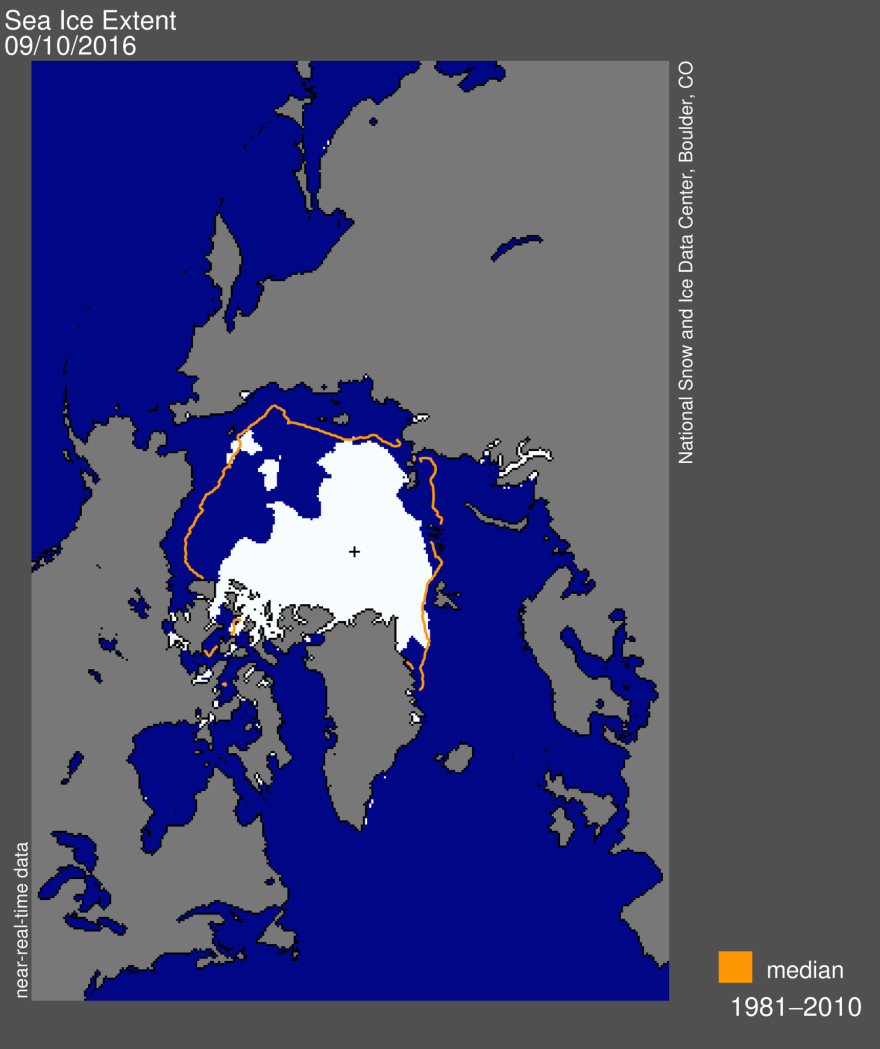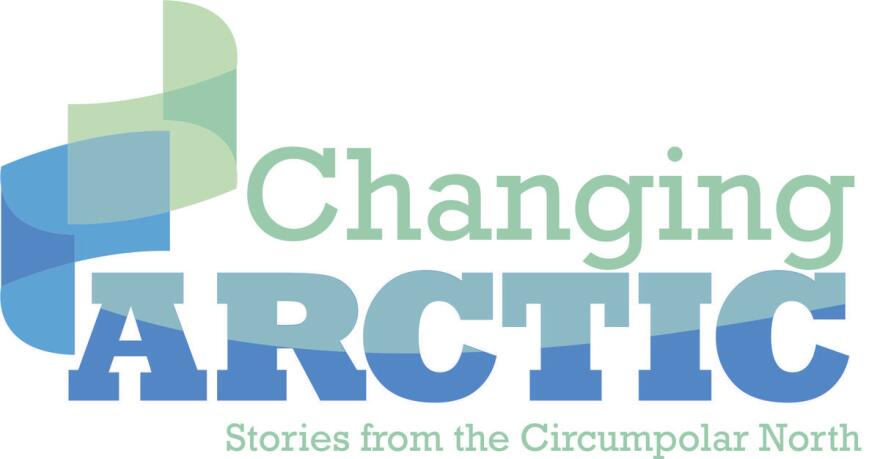A near-record loss of sea ice …
Despite a relatively cool summer in the far north, the Arctic Ocean’s sea-ice cover continued to shrink. But Julienne Stroeve with the National Snow and Ice Data Center says the extent of sea ice in the far north this month wasn’t quite small enough to break the record set in 2012.
“But it still melted out quite a bit, and we ended up as the second-lowest, tied with 2007,” Stoeve said.
The so-called minimum sea-ice extent in ‘07 was at that time the lowest since satellite monitoring began in 1979, covering an average of 1.65 million square miles. That’s about two-and-a-half times the size of Alaska – and about five million square miles less than last year’s minimum extent. The Colorado-based Snow and Ice Data Center on Thursday declared the 2016 minimum at 1.6 million square miles.

“If the weather patterns had been what they were in 2007, we’d likely have had a new record low (this year),” she said.
Stroeve says a couple of powerful cyclones that churned around the high Arctic last month moved sea ice around and complicated efforts to measure its extent.
“Both of those cyclones definitely helped to spread the ice out,” she said, “and some of the ice got pushed into the southern part of the Chukchi Sea, and the ice loss that we saw at the beginning of September really was from that region.”
Stroeve says this year’s minimum extent was largely due to the exceptionally warm winter in the Arctic, part of a trend that’s resulted in 14 consecutive months of record-setting average high temperatures worldwide. The warm Arctic winter limited the formation of sea ice so much that this year’s maximum extent, measured in March, was the smallest maximum ever recorded.
She says that likely why this year’s sea-ice minimum is about the same as 2007’s, even though that year’s summer was much warmer than this year’s.
“So this summer’s definitely ranking among one of the cooler summers,” she said, “and yet you still have the second-lowest sea-ice extent on record.”
Stroeve says it shows that weather is a short-term phenomenon that’s occurring at the same time longer-term changes are taking place in the Arctic.
“Whether it’s a record this year or the year before isn’t maybe as newsworthy as just the fact that we’re on this long-term decline, and we’re going to see an Arctic Ocean that’s ice-free in summers in the near future.”
Experts predict the polar ice cap could disappear during summers within the next few decades.
Editor's note: this story was revised to include the 2017 minimum extent, which the Snow and Ice Data Center announced on Thursday.



